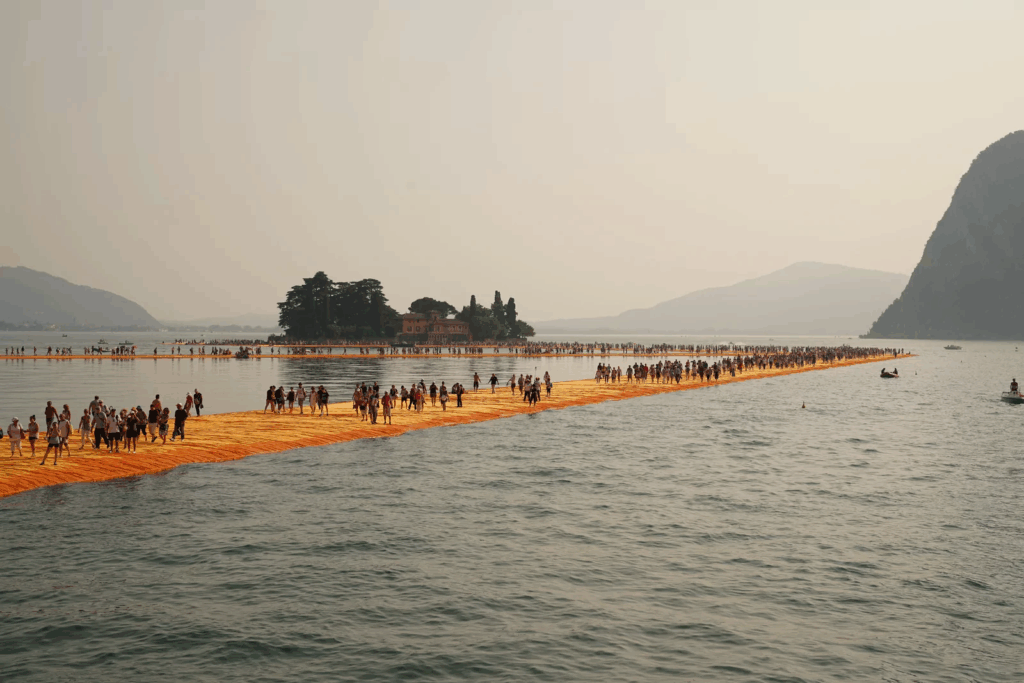
Facts and Figures
Production, Consumption and Export
Production: 19.1 million bottles
For comparison, Champagne 271 million, Prosecco 660 million, Conegliano Valdobbiadene Prosecco Superiore 88 million, Corpinat 2.2 million.
Franciacorte is consumed in Italy (88%) mainly Lombardia (48%).

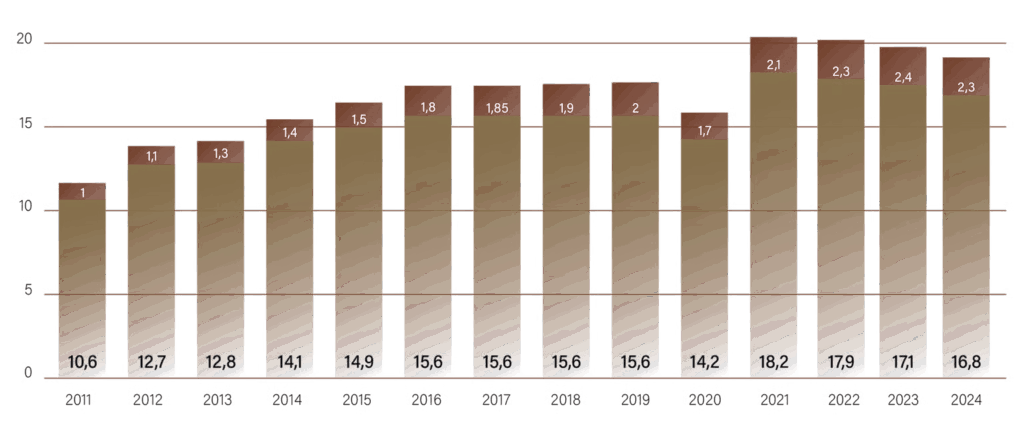
Largest export market is nearby Switzerland (where it amounts to 2% of total sparkling imports).
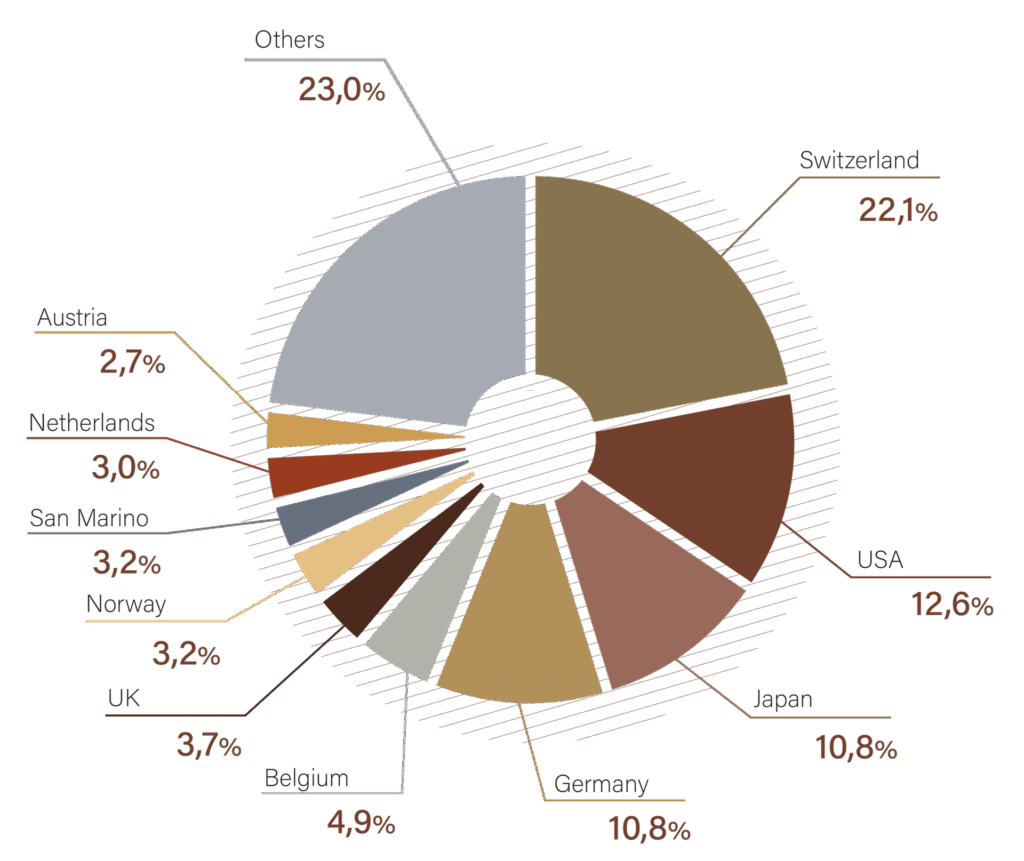
Average shelf price € 24.
For more statistics, see
Top 25
The top 25 wineries together produce 16 million bottles (85% of total production). Berlucchi produces 4.5 million bottles (24%), followed by Ca’ del Bosco (9%), Bellavista (8%) and Contadi Castaldi (7%) – both part of the Terra Moretti group – Monte Rossa, Ferghettina, Montina, Tenuta Montenisa (part of Marchesi Antinori) and others.
See below for a short overview of the most important wineries.
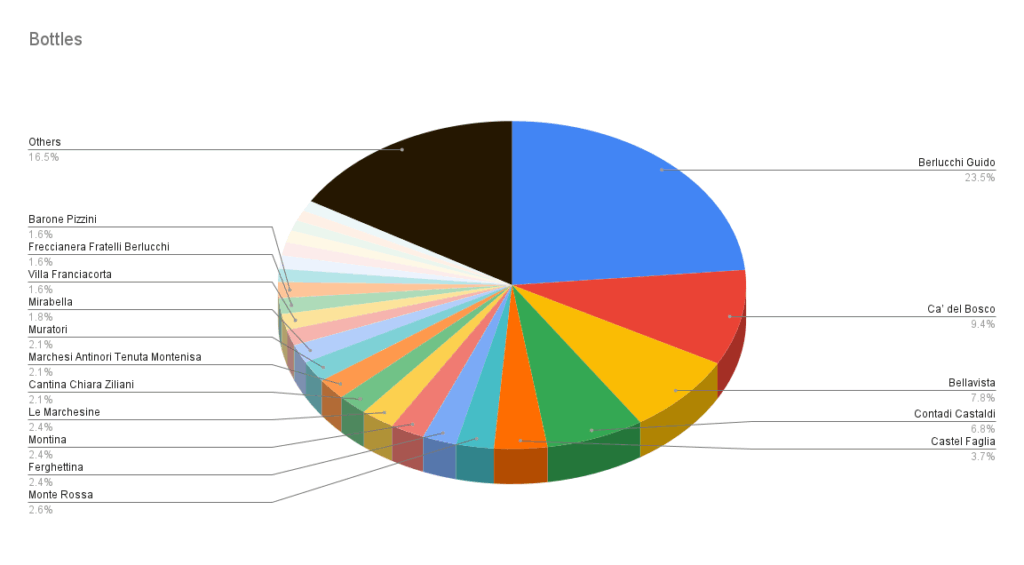
Location
Franciacorta is located west of Brescia and south of Lago Iseo. The area is about 20,370 hectares spread over 19 municipalities, of which 3,634 hectares is planted with grapes.
This about the size of the Kamptal in Austria, Rheingau in Germany or Sancerre in France.

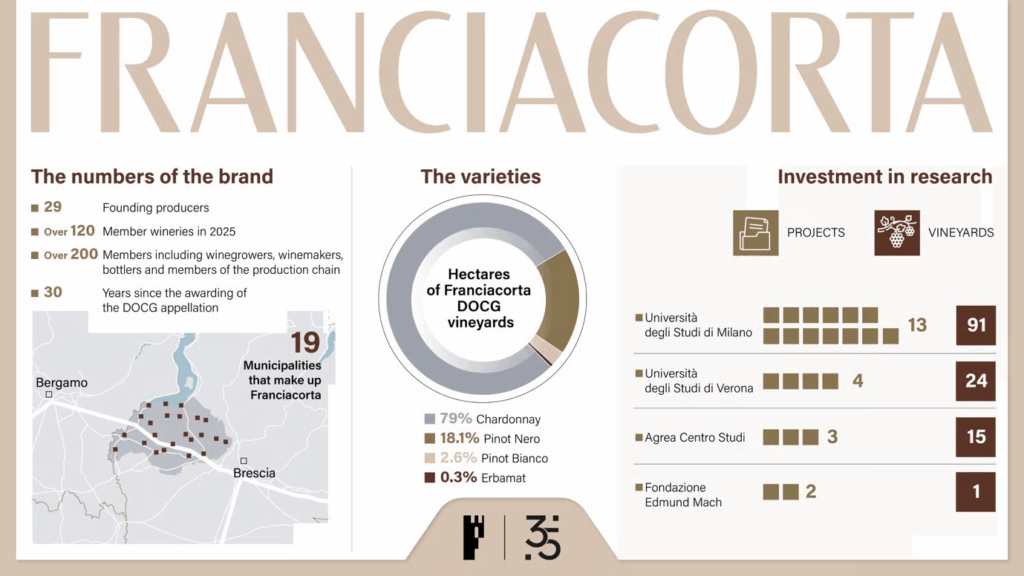
The Franciacorta.wine site lists 115 wineries
For still wines there is Curtefranca DOC (formerly Terre di Franciacorta).
History
Wine making in the region goes back many centuries. The first sparkling Pinot di Franciacorta was made in 1961.

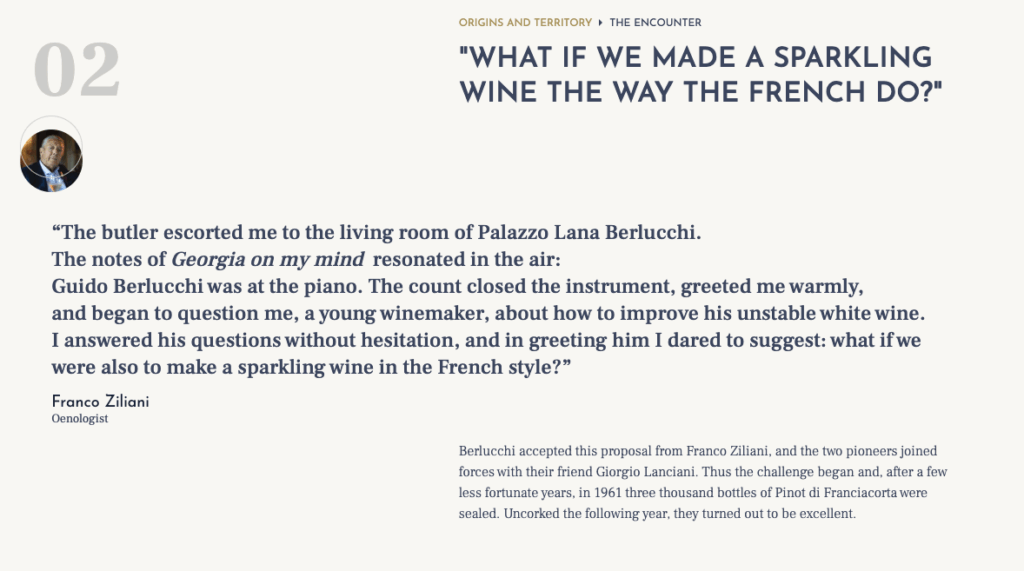
In 1967, the Franciacorta DOC was created (the appellation system was introduced in 1963 shortly after Italy joined the ECC and modeled on the French AOC laws).
There were only 11 wineries making sparkling wine locally, and Guido Berlucchi represented 80 percent of all sparkling Franciacorta production.
- Mosnel (1836)
- Barone Pizzini (1870)
- Ricci Curbastro (1885)
- Bersi Serlini (1886)
- I Barisèi (1898)
- Freccianera Fratelli Berlucchi (1927)
- Villa Franciacorta (1960)
- Guido Berlucchi (1961)
- Ca’ del Bosco (1968)
In 1990, the Franciacorta Consortium was founded with 29 associated producers. In 1995 Franciacorta was elevated to DOCG.
More than half the vineyards have been planted since the Consortium was established (64 of the 114 wineries were founded after 1990).

Varieties
The main grape variety is chardonnay (3/4), followed by pinot nero (17%), and pinot bianco (3%). More recently, erbemat was added.
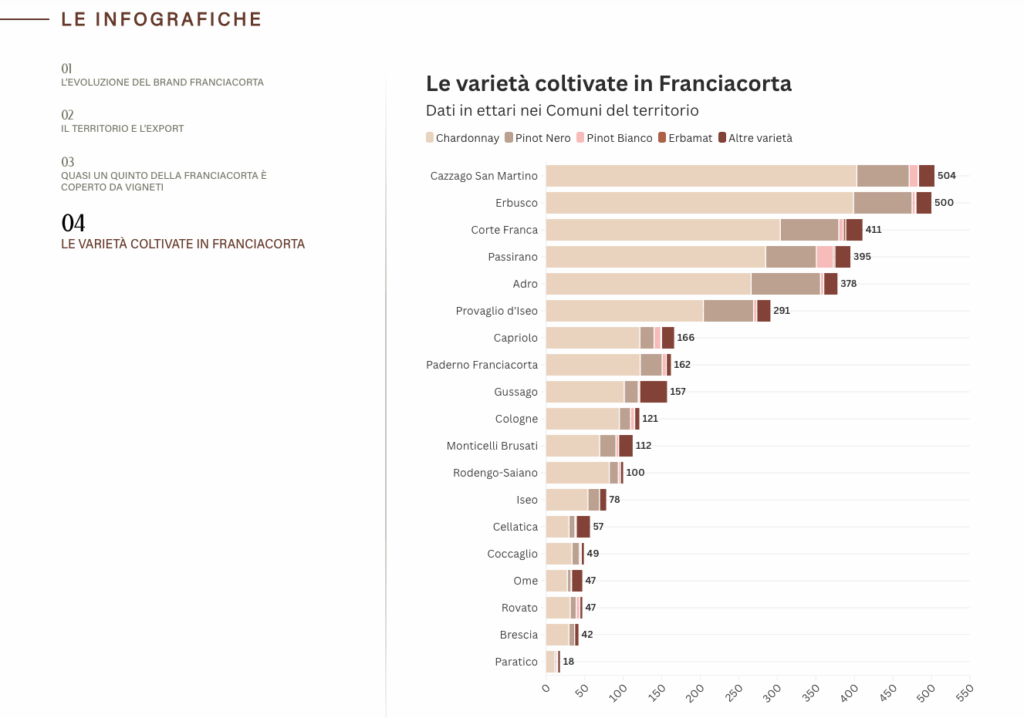
Erbemat is native to Franciacorta. Production started in 2011. In 2017, the variety was included in the regulations (up to a maximum of 10%).
- www.castellobonomi.it/en/erbamat-the-native-of-franciacorta
- Franciacorta embraces forgotten grape to fight climate change – Decanter
Styles
At least 18 months on its lees
- NV (non-vintage): 25+ months after harvest
Two years or more on its lees
Satèn: blanc de blancs with >50% chardonnay and <50% pinot bianco with 4.5 bar for a gentler sparkle
Rosé: >25% pinot nero
At least 30 months on its lees
- Millesimato (vintage): 37+ months after harvest
Five years or more
- Riserva
Regulations
Soils
Carta dei Vigneti e delle Zone della Franciacorta
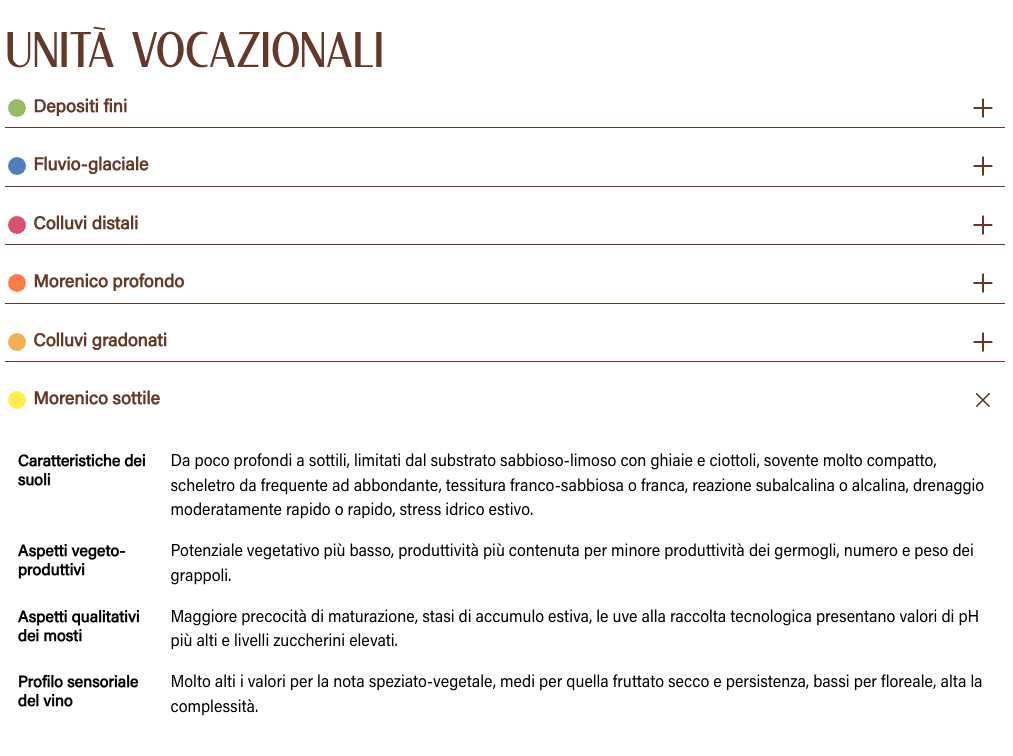
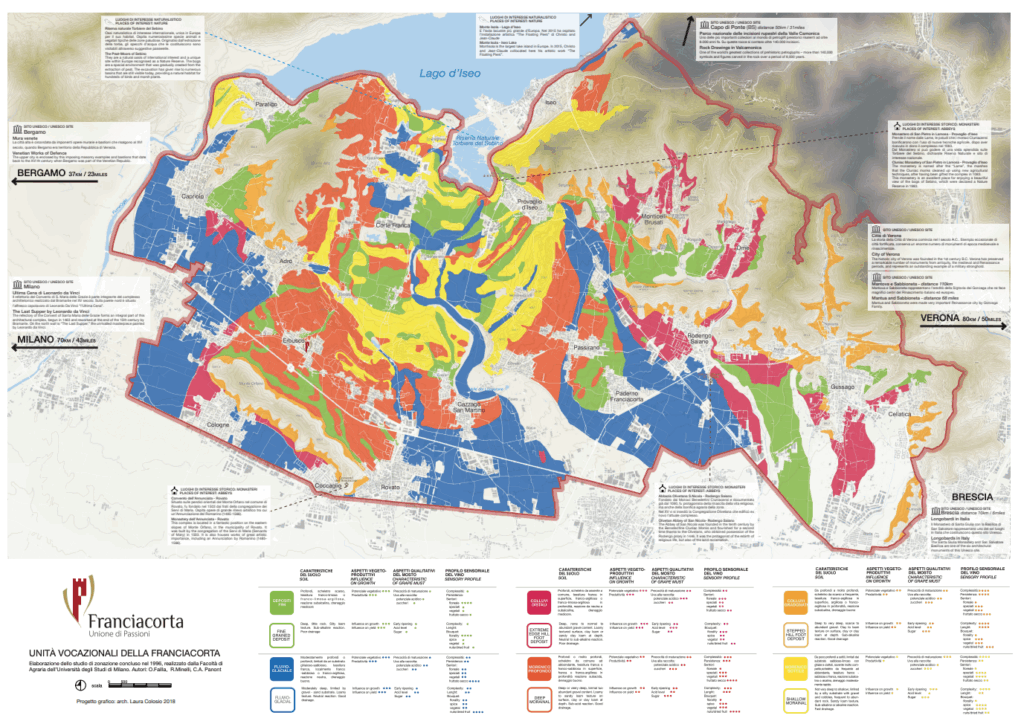

References
Socials
Franciacorta DOP
Books
- Viaggio in Franciacorta, un diario, Armando Castagno – Treccani, Dec 2024 [9788812011827]
- Journey through Franciacorta [9788812012275]

- Le origini del Franciacorta nel Rinascimento Italiano, Gabriele Archetti – Marco Serra Tarantola 2021 [9788867772926]

- Franciacorta ieri, oggi, domani. Storie di vigne, cantine e uomini, Elio Ghisalberti – Giunti, April 2022 [9788809952355]
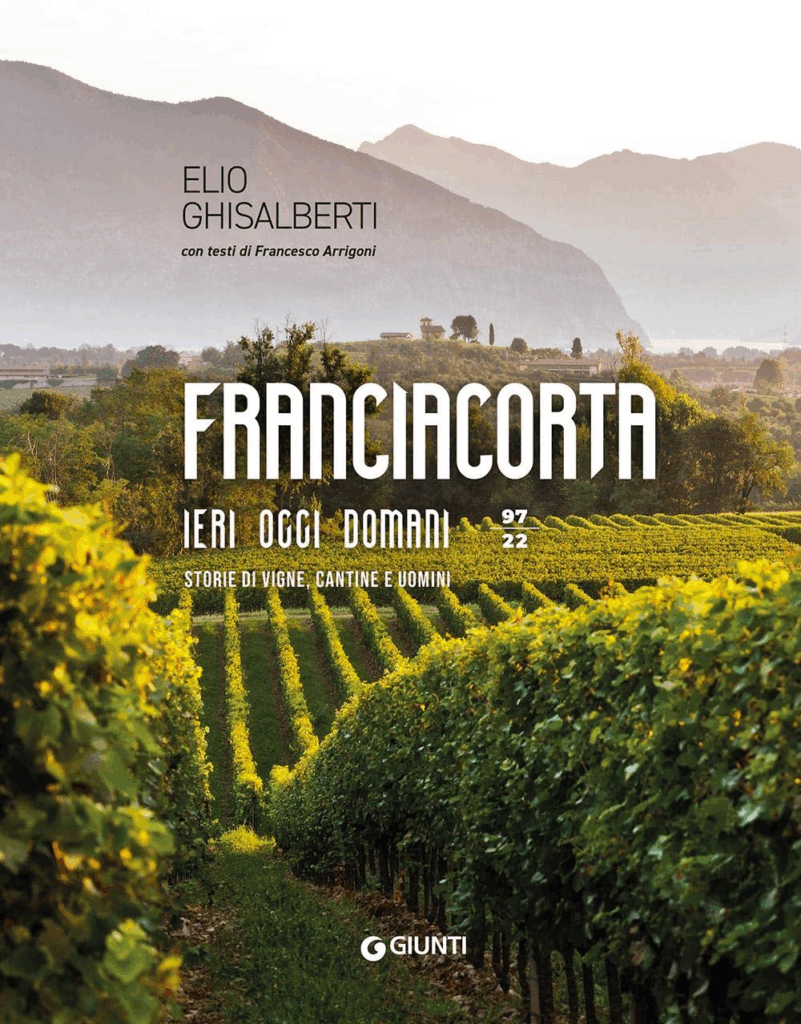
- Franciacorta. Un vino, una terra – Swan Group July, 2010 [978-8878950092]
Magazine and Articles

- Assessing Franciacorta and the future for ‘Italy’s answer to Champagne’, Essi Avellan MV – Club Oenologique, April 2025
- Franciacorta: Italy’s other sparkling wine, Peter Ranscombe – Club Oenologique, July 2019
- Franciacorta: modernity with history – Decanter (Promotion), September 2021
- wine-searcher
- Franciacorta de meglio in meglio, Tom Stevenson – World of Fine Wine, 2008
Videos
F for Franchiacorta, Une terra, un vino
F for Franciacorta. Una terra, un vino: il film
Wine Actually
Video series about Franciacorta by Simone Roveda, founder of Winery Lovers.
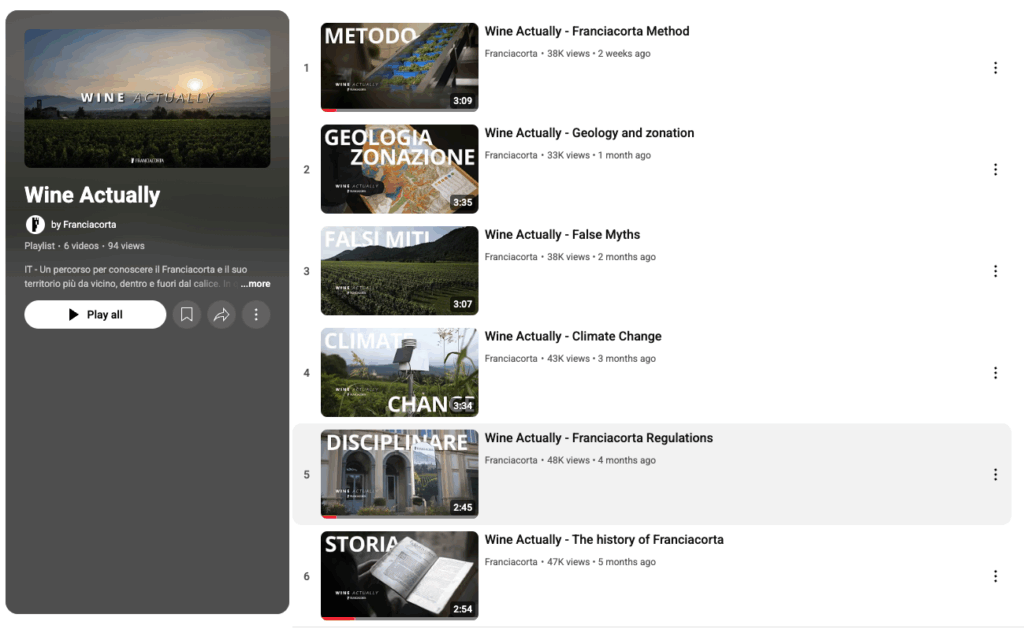
Maps


Strada del Franciacorta

Medals
Gold
- Lo Sparviere, Sylvò Extra Brut 2015
- Monzio Compagnoni, Cuvée Alla Moda Pas Dosé NV
- Bosio, Franciacorta Extra Brut Millesimato ‘Boschedòr’ 2019
- Casa Delle Colonne, Brut Riserva, 2015
- Le Cantorìe, Armonia, 2021
Personalities
Franco Ziliani (1931-2021)
The first Franciacorta sparkling wine was created by Franco Ziliani in 1961 for Berlucchi.
- The dawn of the Franciacorta method
- Tribute paid to Franciacorta wine pioneer Franco Ziliani – Decanter
- A Father of Franciacorta: Franco Ziliani, Pioneering Winemaker of Italian Sparkling Wine, Dies at 90 – Wine Spectator
Guido Berlucchi (1922-2000)
Siamo nel 1954. L’idea vincente di Ziliani è di scommettere sulla qualità. La Francia insegna. L’unica strada per risollevare le sorti della Cantina Berlucchi è affrontare la sfida col nobile Champagne. Ci vogliono sette lunghi anni di esperimenti, di prove, di tentativi, di reperimento di macchinari e materiali vari e, finalmente, nel 1961 c’è il lancio del Pinot di Franciacorta a firma Berlucchi.
- Fondazione Guido Berlucchi
- Bubbly Character, Laura May Todd – World of Interiors 2024
- Guido Berlucchi is Winery of the Year 2022 – World of Fine Wine 2021

Maurizio Zanella
Maurizio Zanelli (1956), founded Ca’ del Bosco. Vineyard planted in 1968.
- Ca’del Bosco: House in the woods by Tom Stevenson – World of Fine Wine, May 2023
- Vite nel bosco (Podcast)
- Italian wine podcast
Vittorio Moretti
Vittorio Moretti (1941), founded Bellavista and Contadi Castaldi, Franciacorta Golf Club and the L’Albereta Relais & Chateaux hotel. President of the Franciacorta Consortium (2015-2018)
- it.wikipedia.org/wiki/Vittorio_Moretti
- Italian Genius, Vittorio Moretti, RAI documentary (2022/23 – 10)
Silvano Brescianini
Silvano Brescianini (1967) is the CEO of Barone Pizzine, one of the oldest wineries in the appellation and a pioneer in organic grape growing for Franciacorta wines. President of the Franciacorta Consortium (2018-2025).
Wineries
For a complete list, visit
Maps
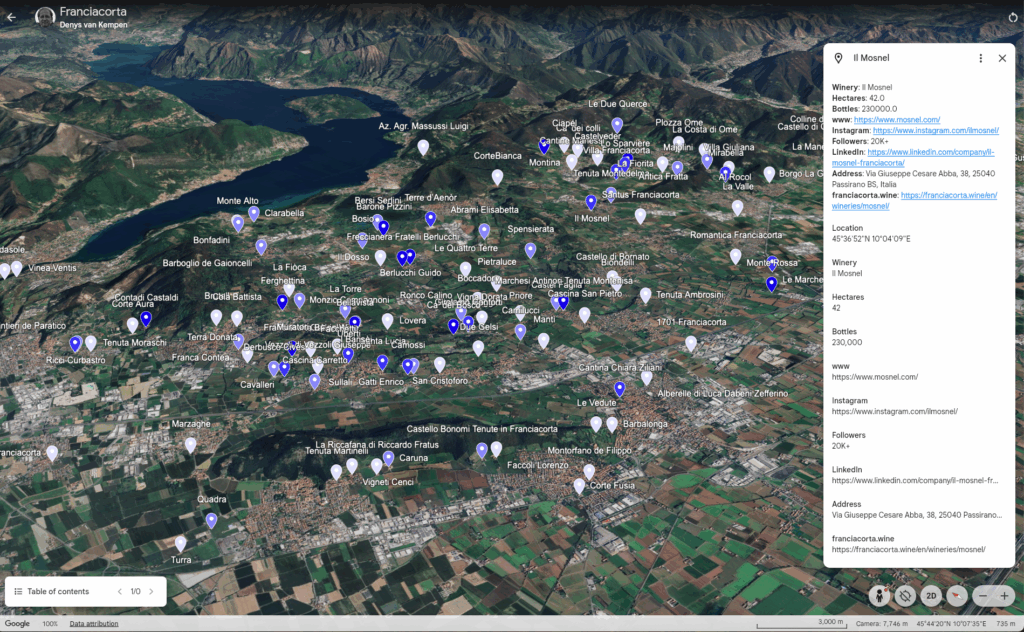
Berlucchi
Founded in 1955, 515 ha, 4.5 M bottles.
Ca’ del Bosco
Founded 1968, 253 hectares, 1.8 M bottles. Part of Herita Marzotto Wine Estates (Gruppo Santa Margherita 1994).
Bellavista
Founded in 1977, 207 hectares, 1.5 M bottles. Part of the Terra Moretti group.
Contadi Castaldi
Founded in 1980, 160 hectares 1.3 M bottles. Part of Terra Moretti group.
Monte Rossa
Founded 1972, 70 ha, 500K bottles. Owner: Emanuele Rabotti (elected president of the consortium in 2025).
Also involved with the largest urban vineyard in Brescia
Ferghettina
Founded 1991 by Roberto Gatti, 200 ha, 450K bottles.
Montina
Founded 1987 by Bozza brothers, 70 ha, 450K bottles.
Muratori (Villa Crespia)
Founded 1999: 54 ha, 400K bottles.
Freccianera Fratelli Berlucchi
Founded 1927, 70 hectares, 300K bottles.
Antica Fratta
Founded 1979, 50 hectares, 300.000 bottles, part of the Gruppo Berlucchi.
Barone Pizzini
La Valle Franciacorta
Monzio Compagnoni
Bonus
Distillerie Franciacorta
Curtefranca DOC
DOC for still wines (formerly Terri di Franciacorta).
Christo
